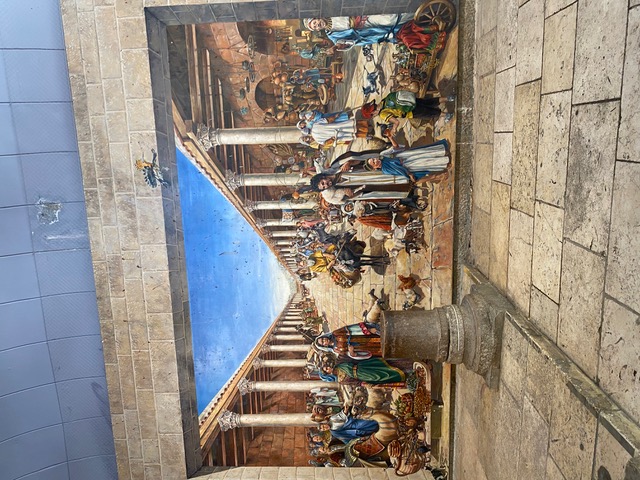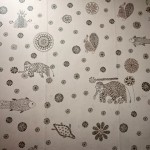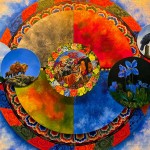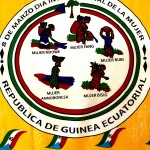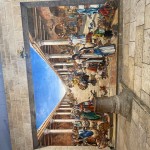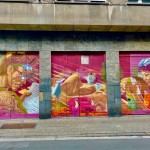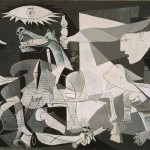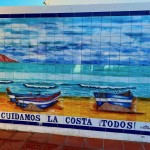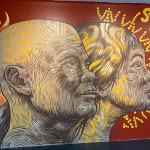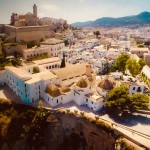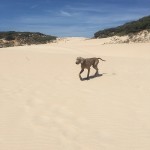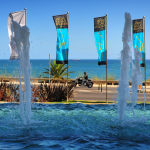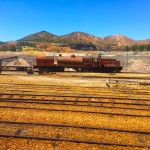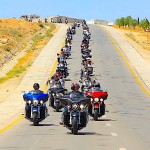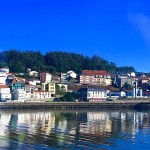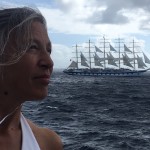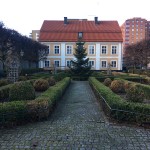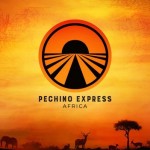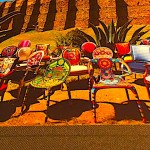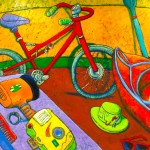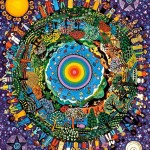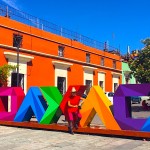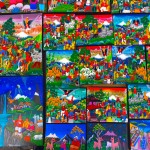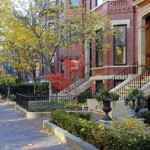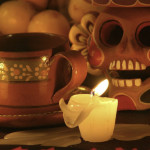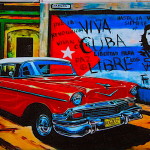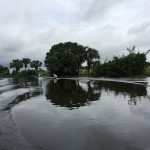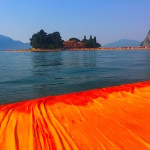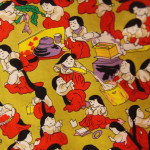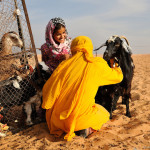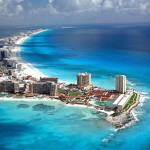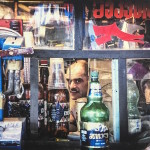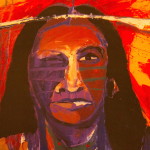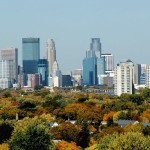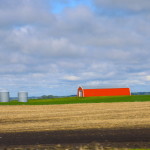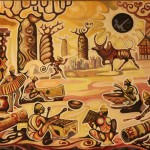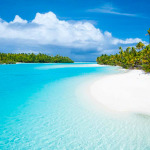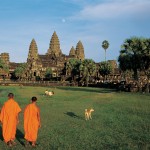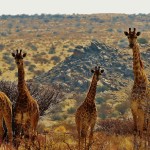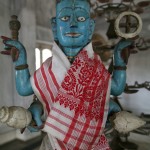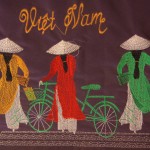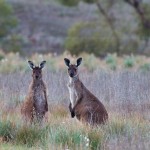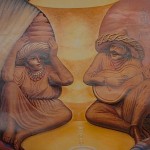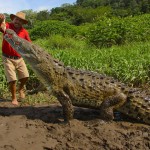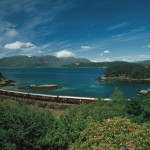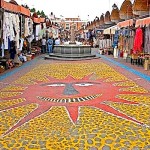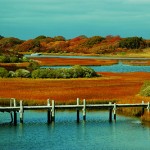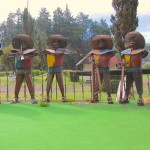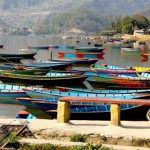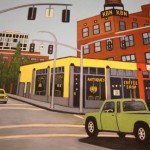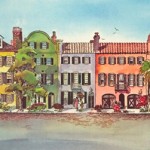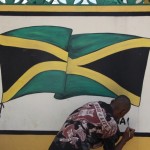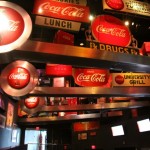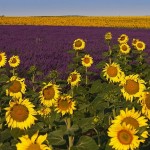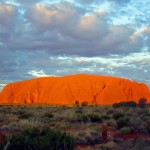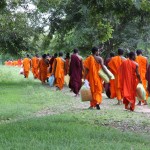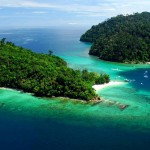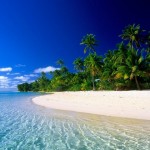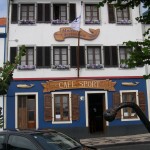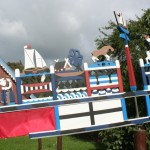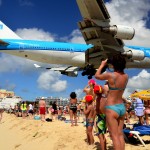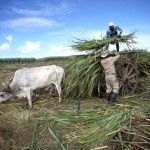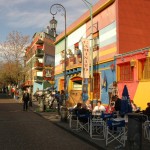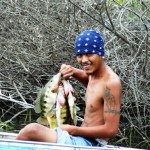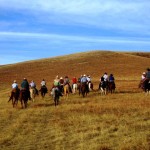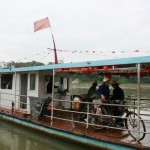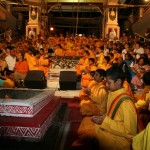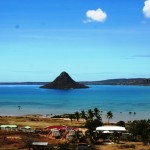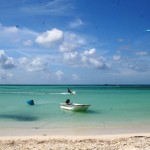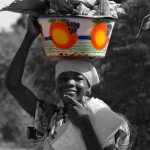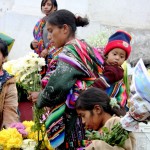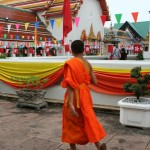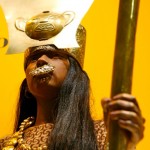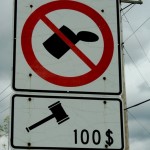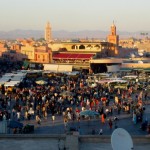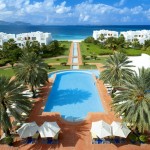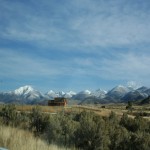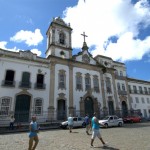Israel is not Israel without the word Shalom (peace). As you walk through each of its streets, no matter if in Jerusalem, Tel Aviv or the Dead Sea, you sense that this need is always present under the radar. Its variegated melting-pot allows the mixture of individuals of origins, religions and cultures that make you experience what the real encounter is. It is perceived that the identity of its people is fluid, under construction and always in constant evolution.
We leave immediately. And let’s forget the Holy Land label to replace it with Interesting Land (inspired by Father Kelly, of whom I will tell you shortly) and see how they handle the made in Israel (considering that post Covid it immediately becomes clear they are not recovering pilgrims, but curious and genuine travelers , families with children and also many single visitors).
The first question they ask me about Israel is: “But can we go there?”.
Yes go there! Israel is safe, from the airport of departure the checks are extremely accurate and it is clear that Israelis are at the top in terms of security, and it is no coincidence that they spend 70% of their economic budget safely.
One feels safe even when, at a random pee stop, dozens of recruits of a young army in camouflage and rigorously shoulder-mounted machine guns appear inside a supermarket. Also for this reason, I find it a possible destination for all those who travel alone.
We find the treasures of always.
Salt from the Dead Sea is still part of its jewels even though a strange struggle is taking place between its two basins. Thanks to dams, the northern one decreases every year by one meter in favor of the southern one, where the most important minerals for agriculture and for the automobile and cosmetic industries are intercepted.
And to remedy the fact that the northern basin will be dried up in less than 300 years, a plan is already being studied that should connect the Red Sea with the Dead Sea.
In any case, cosmetics remains one of the main sectors and, even if Ahava has been sold to the Chinese, few people go back without one of their almost miraculous creams.
Everything about the Dead Sea offers benefits, and not just in gilded cases.
Its salinity is used to fill, for example, a healthy swimming pool of the wonderful kibbutz Ein Gedi, inside which there is, bravely because we are in the desert in front of the lake of Galilee, a botanical garden with even 3 real baobabs, around the which the ibex graze, an Oasis wanted by Ofra Gazil, where you can stay and attend exhibitions of artists who already have an international name such as Elad Kopler.
Other Kibbutzis survive among the traditions, but for the most part, where before they lived only as a kosher community, many have transformed themselves by giving a different choice to travelers.
From Ein Gedi you can easily reach the Masada Fortress (absolutely not to be missed for the history that defines it) and to which, if you are hot, or tired, you can access in a few minutes via a cable car.
In the area, the most coveted photo is no longer the one while we float motionless on the Dead Sea without going to the bottom leafing through a magazine, but the one where the piano is played on the beach, an unthinkable “sonada” to 400 meters below sea level.
On the road towards Jerusalem we stop in front of the remains of the Magdala synagogue where the woman is celebrated as a goddess. Mary Magdalene most faithful of Jesus and first witness of his resurrection (according to the account of the evangelists Luke and Mark) was born here and Father Kelly claims that there is no video of Jesus walking on the nearby waters of Lake Tiberias only because the video has been lost  There are still many who admire the Magdala Stone, one of the oldest representations of the Menora still existing, but certainly everyone notices the wonderful mosaics of the chapels with 160,000 pieces of Murano in each one that well represent the Italianness, seal further of the friendship existing between the “two capitals”, Milan and Tel Aviv.
There are still many who admire the Magdala Stone, one of the oldest representations of the Menora still existing, but certainly everyone notices the wonderful mosaics of the chapels with 160,000 pieces of Murano in each one that well represent the Italianness, seal further of the friendship existing between the “two capitals”, Milan and Tel Aviv.
Already. Tel Aviv.
It is the city with the most expensive cost of living in the world (it has surpassed Paris, Hong Kong and Singapore, data as January 2022), but it enjoys the effects of a strong national currency, the shekel, and an economy capable of attracting innovative companies in its satellite towns creating super-skilled jobs for high-tech engineers.
A top housing reality in which luxury apartments, in the middle of the neighborhood of Bauhaus-style houses unique in the world, can also cost 30,000 euros per square meter.
Tel Aviv, whose name derives from the title of a novel by Theodor Hertzl published in 1902, mixes a love for tradition and an innovative liberal impulse (they even told me that if you want a coffee they can deliver it directly to the office via drone) …
Tel Aviv is also hospitable, one example?, here live many Druze live here who, contrary to popular belief, do not define themselves as Muslims (as those who practice the religion have both Judaism and Islam roots, from which they are persecuted).
Anyway. As we travel to Jerusalem from Tiberias, our knowledgeable and pleasant guide Eli Talmi reminds us that Ben Gurion (the Father of the Fatherland) argued that water would be a challenge for Israel. And today, it seems that the challenge has been won: 95% of the fresh water that is also used for drinking comes from 6 desalination plants in the Mediterranean Sea. Perhaps for this reason, exactly as in the East roaches are eaten grilled, here among the curiosities we find the taste of water recycled directly from the toilets.
Ben Gurion wanted to make deserts bloom and he did because the Negev today is truly a “green desert” (especially the northern part).
On the sides flows the Jordan River, practically dry, but which marks the border with the homonymous nation; and there are no armed turrets, only a simple dividing grid because the 1994 peace agreement made with King Hussein of Jordan is still in force (and in the 70s the Israeli specialists, champions in creating oasis in desert lands, exploiting the drip irrigation, has taught the West Bank their technique).
Not everything is easy, of course, but if nothing else, the efforts for peace are evident and the crops, half Jordanian and half Israeli, have the same sowing and seem to be made by the exact same hand.
The only convenient road through Israel are the 570 km that start from Lebanon and end in Eilat (on the northern Israeli tip of the Red Sea); you travel fast and a checkpoint becomes only a short slowdown (consider the fact that the famous Gaza Strip, with over 1 million and 200,000 Palestinian refugees, is not far away).
We continue on the fast road while tasting a couple of dates (the giants of Medjool, among the best in the world) and the taste of cherry tomatoes made sweeter thanks to the influence of the salt that is soaked in the soil.
Thus we leave the submarine level of the deep depression of the Dead Sea with its 398 meters below the level of the Mediterranean Sea. If we could be a drone we would clearly see that, to reach Jerusalem, we have to overcome a difference in height that takes us to about seven hundred meters above sea level, about fifty kilometers from the Mediterranean coast and as about 30 km from the Dead Sea.
Already. Jerusalem!
We could visit 100 times and 100 times it will surprise us.
Certainly it continues to conquer the Holy Sepulcher and its biblical and evangelical stories, the souk with its noisy and multiethnic stalls, the Wailing Wall and the esplanade of the Mosque with the dome of the Rock…
But the real added value of Jerusalem is the idea that the famous six-pointed Star of David (also called the seal of Solomon), here truly expresses the union of heaven and earth, of the spiritual world with the material world. Irreverent, cheeky, but still attractive, and for visitors there is no longer East and West to divide it.
What to add?
Only by coming in person can one understand why Israel is offering itself as a refuge for persecuted populations (as happens for example with the Armenians, who live in Jerusalem en masse).
You have to come for understand.
You have to see to get your own idea.
Israel must be experienced.
And, rightly or wrongly, Father Kelly’s words echo in our minds, “It only takes two people to hate, to cause trouble for many. Indeed, to create problems for almost everyone “. It will be trivial, but it is not: shalom!
ITALIANO: Israele non è Israele senza la parola Shalom (pace). Mentre cammini per ogni sua strada, non importa se a Gerusalemme, a Tel Aviv o sul Mar Morto, percepisci che questa esigenza è sempre presente sotto traccia. Il suo variegato melting-pot permette la commistione di individui di origini, religioni e culture che ti fanno sperimentare cosa sia il vero incontro. Si percepisce che l’identità del suo popolo è fluida, in costruzione e sempre in continua evoluzione.
Partiamo subito. E dimentichiamo l’etichetta Terra Santa per sostituirla con Terra Interessante (ispirati da padre Kelly di cui vi dirò tra poco) e vediamo come maneggiano il made in Israele (considerato che post Covid appare subito chiaro non stiano recuperando pellegrini, ma viaggiatori curiosi e genuini, famiglie con bambini e anche molti visitatori single).
La prima domanda che mi fanno su Israele è: “Ma ci si può andare?”.
Si andateci! Israele è safe, fin dall’aeroporto di partenza i controlli sono oltremodo accurati e appare chiaro che gli israeliani in tema di sicurezza sono al top, non a caso spendono in sicurezza il 70% del loro budget economico.
Ci si sente al sicuro anche quando, ad un pipì stop casuale, dentro ad un supermercato si palesano decine di reclute di un giovane esercito in mimetica e mitragliatrice rigorosamente a spalla. Anche per questo, la trovo una meta possibile per tutti coloro che viaggiano soli.
Nel ritornarci troviamo i tesori di sempre.
Il sale del mar Morto fa ancora parte dei suoi gioielli anche se è in atto una strana lotta tra i suoi due bacini. Grazie a dighe, quello settentrionale diminuisce ogni anno di un metro a favore di quello meridionale, dove vengono intercettati i minerali più importanti per l’agricoltura e per le industrie di automobili e di cosmetica.
E per ovviare al fatto che il bacino settentrionale sarà prosciugato tra meno di 300 anni, è già allo studio un piano che dovrebbe mettere in comunicazione il Mar Rosso con il Mar Morto.
In ogni caso, la cosmesi resta uno dei comparti principali e, anche se Ahava è stata venduta ai cinesi, sono in pochi a tornare indietro senza una delle loro cremine pressoché miracolose.
Tutto sul mar Morto regala benefici, e non solo in astucci dorati.
La sua salinità viene utilizzata per riempire, ad esempio, una salubre piscina del meraviglioso kibbutz Ein Gedi, al cui interno è stato coltivato, coraggiosamente perché ci troviamo nel deserto davanti al lago di Galilea, un giardino botanico con addirittura 3 veri baobab, attorno al quale pascolano gli ibex, una Oasis voluta da Ofra Gazil, dove si può soggiornare ed assistere ad esposizioni di artisti che hanno già un nome internazionale quali Elad Kopler.
Altri Kibbutz sopravvivono tra le tradizioni, ma per lo più, dove prima si viveva solo e soltanto di comunità kasher, in tanti si sono messi al passo con i tempi e si sono trasformati dando una scelta diversa ai viaggiatori.
Da Ein Gedi si raggiunge facilmente la Fortezza Masada (assolutamente da non perdere per la storia che la definisce) e a cui, se siete accaldati, o stanchi, potrete accedere in pochi minuti tramite una teleferica.
Nell’area, la foto più ambita non è più quella mentre si galleggia immobili sul Mar Morto senza andare a fondo sfogliando una rivista (o scrivendo sulla Moleskine, come ho voluto fare io), ma quella dove in spiaggia si suona il pianoforte, un’impensabile sonada a meno 400 metri sotto il livello del mare.
On the road verso Gerusalemme ci fermiamo davanti ai resti della sinagoga di Magdala dove la donna è celebrata come una dea. Maria Maddalena fedelissima di Gesù e prima testimone della sua resurrezione (secondo il racconto degli evangelisti Luca e Marco) è nata qui e Padre Kelly sostiene che non c’è il video di Gesù che cammina sulle vicine acque del lago Tiberiade soltanto perché il video è andato perso  Sono comunque in molti ad ammirare la Pietra di Magdala, una delle più antiche rappresentazioni della Menorà ancora esistenti, ma certamente tutti notano i meravigliosi mosaici delle cappelle con in ognuna 160.000 pezzi di Murano che bene rappresentano l’italianità, suggello ulteriore dell’amicizia in essere tra le “due capitali”, Milano e Tel Aviv.
Sono comunque in molti ad ammirare la Pietra di Magdala, una delle più antiche rappresentazioni della Menorà ancora esistenti, ma certamente tutti notano i meravigliosi mosaici delle cappelle con in ognuna 160.000 pezzi di Murano che bene rappresentano l’italianità, suggello ulteriore dell’amicizia in essere tra le “due capitali”, Milano e Tel Aviv.
Già. Tel Aviv.
È la città con il costo della vita più caro del mondo (ha superato Parigi, Hong Kong e Singapore, dati di gennaio 2022), ma gode degli effetti di una moneta nazionale forte, lo shekel, e di un’economia in grado di attirare aziende innovative nelle sue cittadine satelliti creando posti di lavoro super specializzato a favore di ingegneri hightech.
Una realtà abitativa al top in cui gli appartamenti di lusso, in mezzo al quartiere di case in stile Bauhaus unico al mondo, possono anche costare 30.000 euro al metro quadro.
Tel Aviv, il cui nome deriva dal titolo di un romanzo di Theodor Hertzl pubblicato nel 1902, mescola amore per la tradizione e un innovativo slancio liberal, mi hanno persino detto che se si vuole un caffè lo possono consegnare direttamente in ufficio via drone…
Tel Aviv all’avanguardia e anche ospitale (vivono qui molti drusi che, a differenza di quanto si pensa non si definiscono musulmani (in quanto chi pratica la religione ha sia radici nell’Ebraismo che nell’Islam, da cui sono invece perseguitati).
Mentre si viaggia verso Gerusalemme da Tiberiade, la nostra competente e piacevole guida Eli Talmi ci ricorda che Ben Gurion (il Padre della Patria), sosteneva che per Israele l’acqua sarebbe stata una sfida. E oggi, pare che la sfida sia stata vinta: il 95% dell’acqua dolce che si usa anche per bere arriva da 6 impianti di desalinizzazione del Mar Mediterraneo. Forse per questo, esattamente come in Oriente si mangiano gli scarafaggi alla piastra, qui tra le curiosità ritroviamo l’assaggio dell’acqua riciclata direttamente dalle toelette.
Ben Gurion voleva fare fiorire i deserti e ci è riuscito perché il Negev oggi è davvero un “deserto verde” (soprattutto la parte settentrionale).
Ai lati scorre il fiume Giordano, praticamente in secca, ma che segna il confine con la nazione omonima; e non ci sono torrette armate, soltanto un semplice reticolato di divisione perché vige ancora l’accordo di pace del 1994 fatto con Re Hussein di Giordania (e negli anni ’70 gli specialisti israeliani, campioni a creare oasis in terre desertiche, sfruttando l’irrigazione a goccia, hanno insegnato la loro tecnica ai Cisgiordani).
Non tutto è facile, ovviamente, ma se non altro gli sforzi per la pace sono evidenti e le colture, metà giordane e metà israeliane, hanno la stessa semina e paiono proprio fatte dalla stessa identica mano.
L’unica comoda viabilità che attraversa Israele sono i 570 km che partono dal Libano e finiscono a Eilat (sulla punta settentrionale israeliana del Mar Rosso); si viaggia veloce e un check-point diventa soltanto un breve rallentamento, nonostante la famosa Striscia di Gaza, con oltre 1 milione e 200.000 rifugiati palestinesi, sia poco lontana.
Continuiamo sulla strada veloce mentre assaggiamo un paio di datteri (i giganti di Medjool, tra i più buoni del mondo) e il gusto dei pomodorini cherry resi più dolci grazie all’influenza del sale di cui è intriso il terreno.
Usciamo così dal livello sottomarino della depressione profonda del Mar Morto con i suoi 398 metri sotto il livello del Mar Mediterraneo. Se potessimo essere un drone vedremmo chiaramente che, per raggiungere Gerusalemme, bisogna superare un dislivello che ci porta a circa settecento metri sopra il livello del mare, a una cinquantina di chilometri dalle coste del Mediterraneo, nonché a circa 30 km dal Mar Morto.
Già. Gerusalemme!
Si potrebbe visitare 100 volte e 100 volte ci sorprenderà.
Certamente ci continua a conquistare il Santo sepolcro e le sue storie bibliche ed evangeliche, il suq con i suoi banchi chiassosi e multietnici, il Muro del Pianto e la spianata della Moschea con la cupola della Roccia.
Ma il vero valore aggiunto di Gerusalemme è l’idea che la famosa stella di David a sei punte (anche detto sigillo di Salomone), qui esprime davvero l’unione del cielo e della terra, del mondo spirituale con il mondo materiale. Irriverente, sfrontata, ma comunque attrattiva, e per i visitatori non c’è più Est e Ovest a dividerla.
Cosa aggiungere?
Soltanto venendo di persona si intuisce perché Israele si proponga come rifugio per popolazioni perseguitate (come accade ad esempio con gli armeni, che vivono a Gerusalemme in massa).
Bisogna venire per capire.
Bisogna vedere per farsi una idea propria.
Bisogna vivere Israele.
E, a torto o a ragione, riecheggiano nella nostra mente le parole di Padre Kelly, “Basta soltanto che due persone odino, per creare problemi a tanti. Anzi, per creare problemi quasi a tutti”. Sarà banale, ma non lo è: shalom!
ESPAÑOL: Israel no es Israel sin la palabra Shalom (paz). Mientras caminas por cada una de sus calles, ya sea en Jerusalén, Tel Aviv o el Mar Muerto, sientes que esta necesidad siempre está presente bajo el radar. Su crisol abigarrado permite la mezcla de individuos de orígenes, religiones y culturas que te hacen experimentar lo que es el encuentro real. Se percibe que la identidad de su gente es fluida, en construcción y siempre en constante evolución.
Nos vamos inmediatamente. Y olvidemos la etiqueta de Tierra Santa para reemplazarla por Tierra Interesante (inspirada en el padre Kelly, de quien les hablaré en breve) y veamos cómo manejan el “made en Israel” (considerando que post Covid inmediatamente queda claro que no son peregrinos, pero viajeros curiosos y genuinos, familias con niños y también muchos visitantes solteros).
La primera pregunta que me hacen sobre Israel es: “¿Pero podemos ir allá?”.
¡Sí, se puedes! Israel está segura, desde el aeropuerto de salida los controles son extremadamente precisos y está claro que los israelíes están en lo más alto en cuanto a seguridad, y no es casualidad que gasten el 70% de su presupuesto económico de forma segura.
Uno se siente seguro incluso cuando, en una parada al azar para hacer pis, aparecen decenas de reclutas de un joven ejército camuflados y con ametralladoras rigurosamente al hombro dentro de un supermercado. También por eso, lo encuentro un destino posible para todos aquellos que viajan solos.
Encontramos los tesoros de siempre.
La sal del Mar Muerto sigue siendo parte de sus joyas a pesar de que entre sus dos cuencas se desarrolla una extraña lucha. Gracias a las represas, la del norte disminuye cada año un metro en favor de la del sur, donde se interceptan los minerales más importantes para la agricultura y para la industria automotriz y cosmética.
Y para remediar el hecho de que la cuenca norte se secará en menos de 300 años, ya se está estudiando un plan que debería conectar el Mar Rojo con el Mar Muerto.
En cualquier caso, la cosmética sigue siendo uno de los principales sectores y, aunque Ahava se haya vendido a los chinos, pocos vuelven sin una de sus casi milagrosas cremas.
Todo sobre el Mar Muerto ofrece beneficios.
Su salinidad se aprovecha para llenar, por ejemplo, una piscina del maravilloso kibutz Ein Gedi, dentro del cual se cultivó, valientemente porque estamos en el desierto frente al lago de Galilea, un jardín botánico con tambien 3 baobabs reales, en torno al cual pacen las cabras montesas, un Oasis donde poder hospedarse y asistir a exposiciones de artistas que ya tienen un nombre internacional (como Elad Kopler).
Otros kibbutzis sobreviven entre las tradiciones, pero en su mayoría, donde antes vivían únicamente comunidades kosher, muchos se han posto al día y se han transformado dando una opción diferente a los viajeros.
Desde Ein Gedi puedes llegar fácilmente a la Fortaleza de Masada (imperdible por la historia que la define) y a la que, si tienes calor o estás cansado, puedes acceder en pocos minutos a través de un teleférico.
En la zona, la foto más codiciada ya no es aquella mientras flotamos inmóviles en el Mar Muerto sin mudarte (o escribiendo en la Moleskine, como he echo), sino aquella en la que el tu puedes tocar el piano en la playa, impensable a menos de 400 metros bajo el nivel del mar.
De camino a Jerusalén nos detenemos frente a los restos de la sinagoga de Magdala donde se celebra a la mujer como diosa. María Magdalena, la más fiel de Jesús y primera testigo de su resurrección (según el relato de los evangelistas Lucas y Marcos) nació aquí y el padre Kelly afirma que no hay un video de Jesús caminando sobre las aguas cercanas del lago Tiberíades porque el video esta perdido 
Todavía son muchos los que admiran la Piedra de Magdala, una de las representaciones más antiguas de la Menora existentes, pero seguro que todos se fijan en los maravillosos mosaicos de las capillas con 160.000 piezas de Murano en cada una que bien representan la italianidad, sellar aún más la amistad existente entre las “dos capitales”, Milán y Tel Aviv.
Ya. Tel Aviv.
Es la ciudad con el coste de vida más caro del mundo (ha superado a París, Hong Kong y Singapur, datos a enero de 2022), pero disfruta de los efectos de una moneda nacional fuerte, el shekel, y de una economía capaz de atraer empresas innovadoras en sus ciudades satélite creando puestos de trabajo supercalificados para ingenieros de alta tecnología.
Una realidad habitacional top en la que los pisos de lujo, en pleno barrio de casas estilo Bauhaus único en el mundo, pueden costar también 30.000 euros el metro cuadrado.
Tel Aviv, cuyo nombre deriva del título de una novela de Theodor Hertzl publicada en 1902, mezcla el amor por la tradición y un impulso liberal innovador (incluso me dijeron que si quieres un café te lo pueden entregar directamente en la oficina vía drone) …
Tel Aviv es también hospitalaria (aquí viven muchos drusos que, contrariamente a la creencia popular, no se definen como musulmanes, ya que quienes practican la religión tienen raíces tanto en el judaísmo como en el islam, de donde son perseguidos).
Mientras viajamos a Jerusalén desde Tiberíades, nuestro experto y agradable guía Eli Talmi nos recuerda que Ben Gurion (el Padre de la Patria) argumentó que el agua sería un desafío para Israel. Y hoy, parece que el reto está ganado: el 95% del agua dulce que también se usa para beber proviene de 6 plantas desaladoras en el mar Mediterráneo. Quizá por eso, al igual que en Oriente se comen las cucarachas a la plancha, aquí entre las curiosidades encontramos el sabor del agua reciclada directamente de los sanitarios.
Ben Gurion quería hacer florecer los desiertos y logró porque el Negev hoy es verdaderamente un “desierto verde” (especialmente la parte norte).
A los lados corre el río Jordán, prácticamente seco, pero que marca la frontera con la nación homónima; y no hay torres armadas, sólo una simple reja divisoria porque sigue vigente el acuerdo de paz de 1994 hecho con el rey Hussein de Jordania (y en los años 70 los especialistas israelíes, campeones en crear oasis en tierras desérticas, explotando el riego por goteo enseñaron esta técnica a Cisjordania).
No todo es fácil, por supuesto, pero los esfuerzos por la paz aqui son evidentes y los cultivos, mitad jordanos y mitad israelíes, tienen la misma siembra y parecen estar hechos exactamente por la misma mano.
El único camino conveniente a través de Israel son los 570 km que comienzan en el Líbano y terminan en Eilat (en el extremo norte de Israel del Mar Rojo); se viajas rápido y un puesto de control se convierte en solo un breve frenazo (considera de que la famosa Franja de Gaza, con más de 1 millón 200.000 refugiados palestinos, no está lejos).
Seguimos mientras degustamos un par de dátiles (los gigantes de Medjool, entre los mejores del mundo) y el sabor de los tomates cherry endulzados gracias a la influencia de la sal que se empapa en la tierra.
Y así dejamos a las espaldas el nivel submarino de la profunda depresión del Mar Muerto con sus 398 metros bajo el nivel del Mar Mediterráneo. Si pudiéramos ser un dron veríamos claramente que, para llegar a Jerusalén, tenemos que salvar un desnivel que nos lleva a unos setecientos metros sobre el nivel del mar, a unos cincuenta kilómetros de la costa mediterránea y a unos 30 km del Mar Muerto.
Ya. ¡Jerusalén!
Podríamos visitarlo 100 veces y 100 veces nos sorprenderá: el Santo Sepulcro y sus relatos bíblicos y evangélicos, el zoco con sus puestos ruidosos y multiétnicos, el Muro de los Lamentos y la explanada de la Mezquita con la cúpula de la Roca.
Pero el verdadero valor añadido de Jerusalén es la idea de que la famosa estrella de David de seis puntas (también llamada el sello de Salomón), aquí expresa verdaderamente la unión del cielo y la tierra, del mundo espiritual con el mundo material. Irreverente, descarado, pero aún atractivo, y para los visitantes ya no hay ni siquiera Oriente y Occidente para crear división (o confusión).
¿Qué agregar?
Sólo viniendo en persona se puede entender por qué Israel se ofrece como refugio para poblaciones perseguidas (como sucede por ejemplo con los armenios, que viven en masa en Jerusalén).
Tienes que llegar para entender.
Tienes que ver para tener tu propia idea.
Israel debe ser experimentado.
Y, correcta o incorrectamente, las palabras del Padre Kelly resuenan en nuestras mentes: “Solo se necesitan dos personas para odiar y causar problemas a muchos, y para casi todos “.
Será trivial, pero no lo es: ¡shalom!

